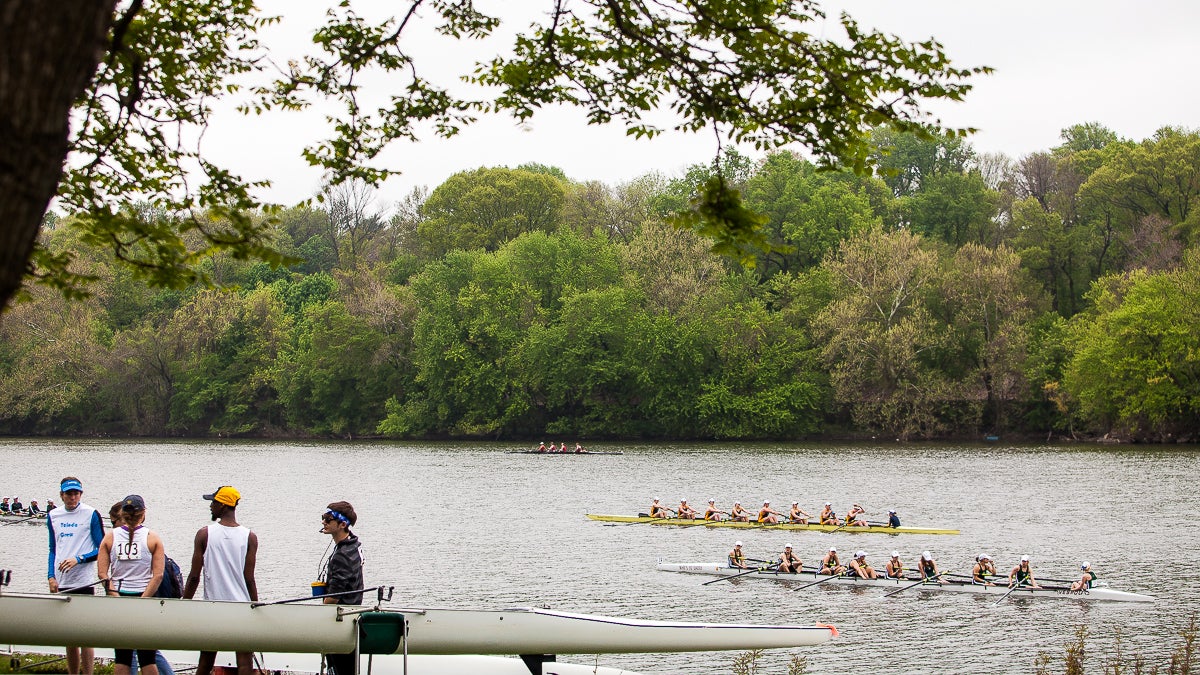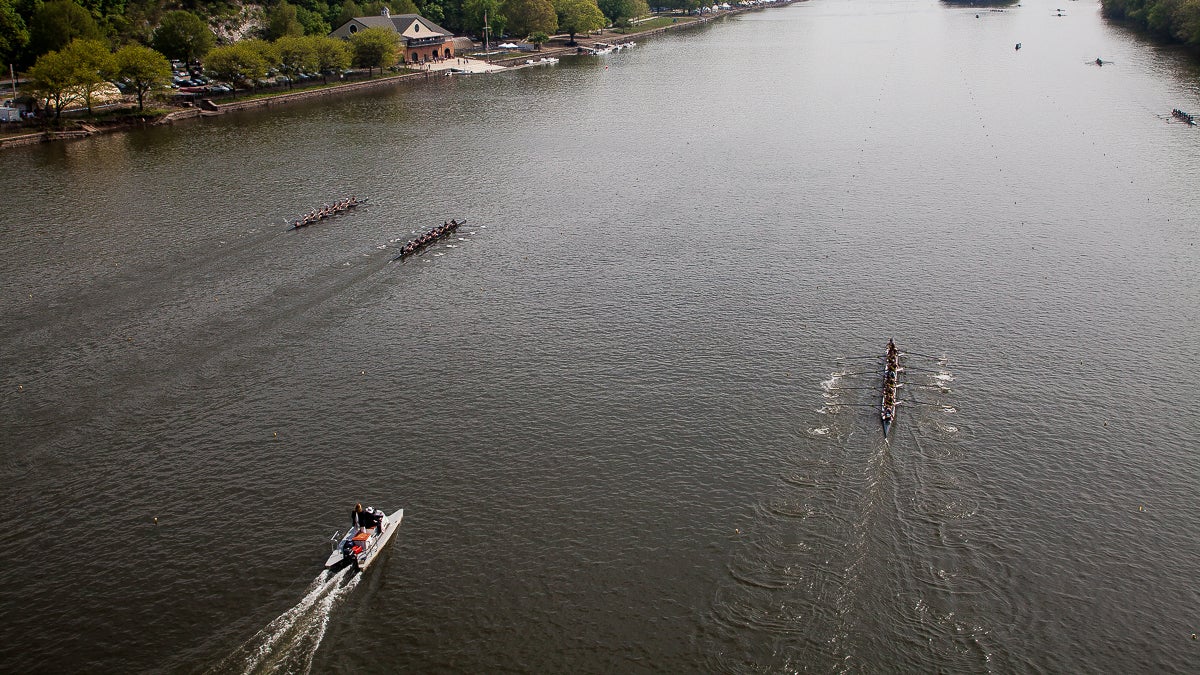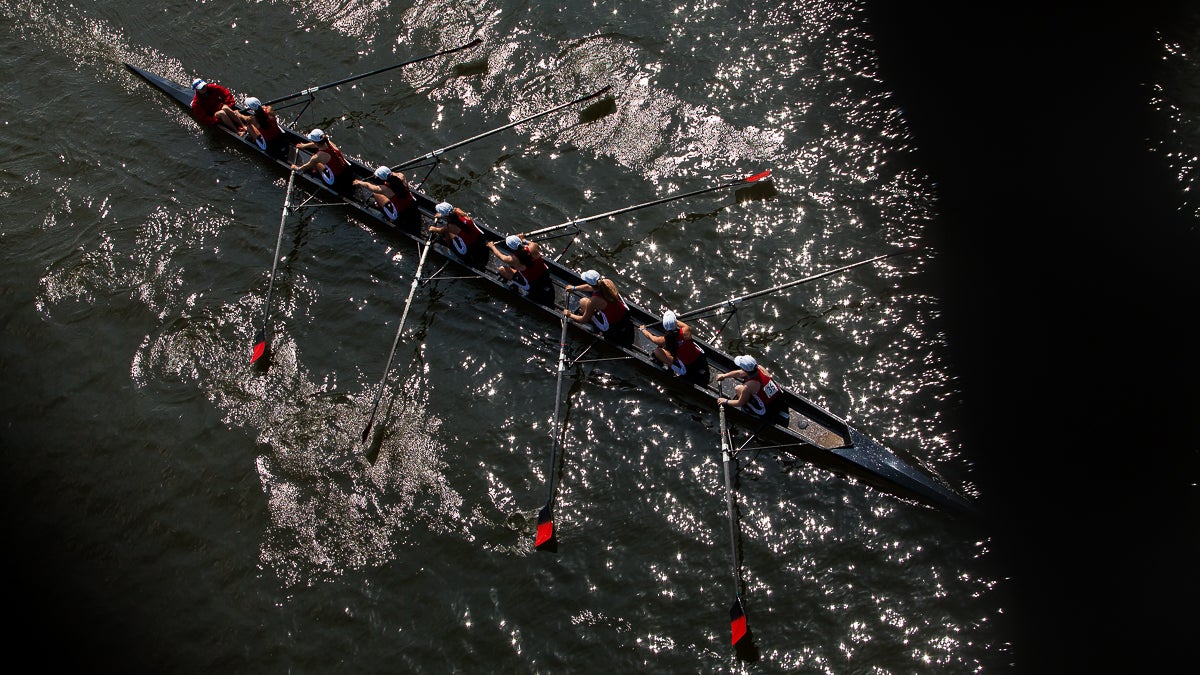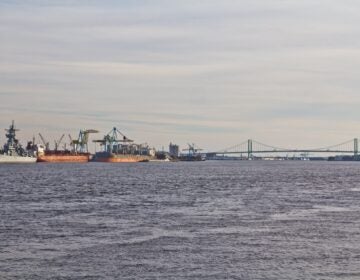Dredging funds raised to keep boat racing afloat on the Schuylkill
The $4.5 million needed to dredge shallow areas around Boathouse Row and the national racecourse means silt threatening the city’s regattas will be removed.

West Point Men's Crew prepares to put their boat in the water Friday during the Dad Vail Regatta. (Brad Larrison for WHYY, file)
Philadelphians will be able to continue enjoying the long tradition of rowing on the Schuylkill River.
That heritage is no longer in peril now that $4.5 million has been found to dredge shallow areas of silt around Boathouse Row and the national racecourse. The money came from members of the 10 rowing clubs of Boathouse Row; universities with rowing programs; the three major regatta organizations; and individual donors, foundations and institutions, as well as from city and state funds.
“Philadelphia is seen nationally and internationally as a leader and as a hub for the sport of rowing,” said Kathryn Ott Lovell, the city’s Parks & Recreation commissioner. “It’s just become a part of our culture here in Philadelphia, it’s become very much a part of our park system. The Schuylkill River, and Boathouse Row, and Kelly Drive, and West River Drive have become iconic landmarks for us in the city of Philadelphia, and I just can’t imagine what the Schuylkill would be like if we didn’t have that recreational aspect to this beautiful natural asset.”
Silt has accumulated in the riverbed since it was last dredged in 1999, resulting in uneven depth in the racecourse and in areas around the boathouses. The Schuylkill Navy, as the association of rowing clubs is known, has been trying to get it dredged for four years.

Paul Laskow, chair of the Schuylkill Navy’s River Restoration Committee, said access to the river has become unsafe because there is only a very narrow and shallow channel available right now. Famed regattas were beginning to lose competitors, he said, because organizers didn’t feel that all six lanes were safe and equal — lane six is less than 2 feet deep, while the others are closer to 10 feet deep.
The largest scholastic, collegiate and club regattas are held in Philadelphia, Laskow said. No dredging would have meant the end of the economic benefits brought to the city by such regattas as Dad Vail and the Stotesbury Cup. But it also would have meant the end of a rowing tradition here that goes back to the 19th century.
“Rowing in the United States really more or less started here, and this was the epicenter of rowing well into the 20th century,” Laskow said. “If there’s no rowing, the boathouses would go dark, as they did in the Depression. And that would be a blow to civic pride.”
The dredging work will be done by the U.S. Army Corps of Engineers and take about 90 days to complete. The plan is to remove accumulated sediment shoals at four locations that include portions of the racecourse in the vicinity of Peter’s Island and the Strawberry Mansion Bridge; an area around the docks in front of Boathouse Row; and an adaptive rowing access point to the river below the Columbia Railroad Bridge.

An estimated 60,000 cubic yards of material will be removed and transported to Fairmount Dam, and then taken downstream to the Fort Mifflin Confined Disposal Facility, according to a public notice by the Army Corps. Work will start by mid-August and is expected to finish before the end of the year, without disrupting regattas.
An environmental assessment found there would be no significant impact, and that the work will not affect listed species or their critical habitat, according to the Army Corps. The project is being coordinated with the U.S. Fish and Wildlife Service, National Marine Fisheries Service, the Environmental Protection Agency, the Pennsylvania Department of Conservation and Natural Resources, the Pennsylvania Game Commission, the Pennsylvania Fish and Boat Commission, the state Historical and Museum Commission, and the City of Philadelphia.

Bonnie Mueller is an active rower and vice commodore of Schuylkill Navy, which began in 1858 with nine clubs and approximately 300 members. Today, it has 18 member organizations. Mueller said the funding for the dredging project and a long-term maintenance plan that’s in the works will allow coming generations to use and enjoy the river.
“The tradition of scholastic, youth, and university teams is strong on the Schuylkill,” she said. “No place in the world do you have over 40 schools and youth programs on the same river, working to transform lives and future generations by getting students on the water.”
Ott Lovell, the parks commissioner, said the dredging project is a fundamental part of the city’s effort to increase community access to the river, especially for those who have been underrepresented. Among future projects, she said, will be identifying a site for a community boathouse, where people could come with their own boats.
WHYY is your source for fact-based, in-depth journalism and information. As a nonprofit organization, we rely on financial support from readers like you. Please give today.







